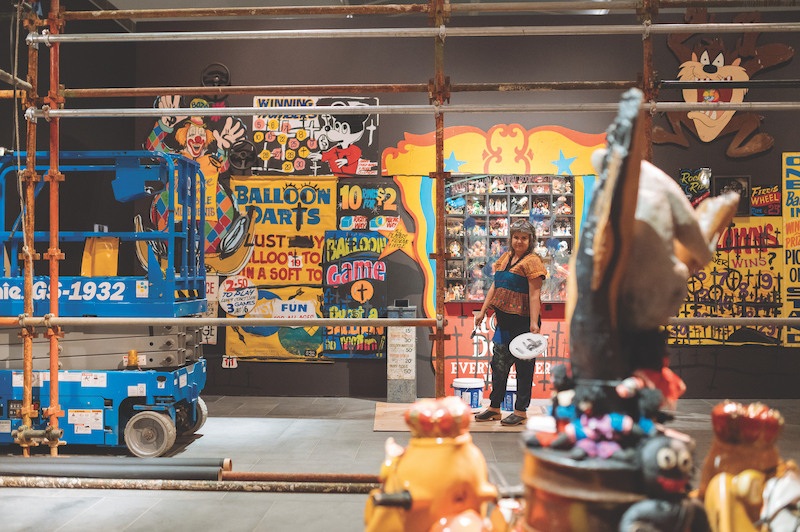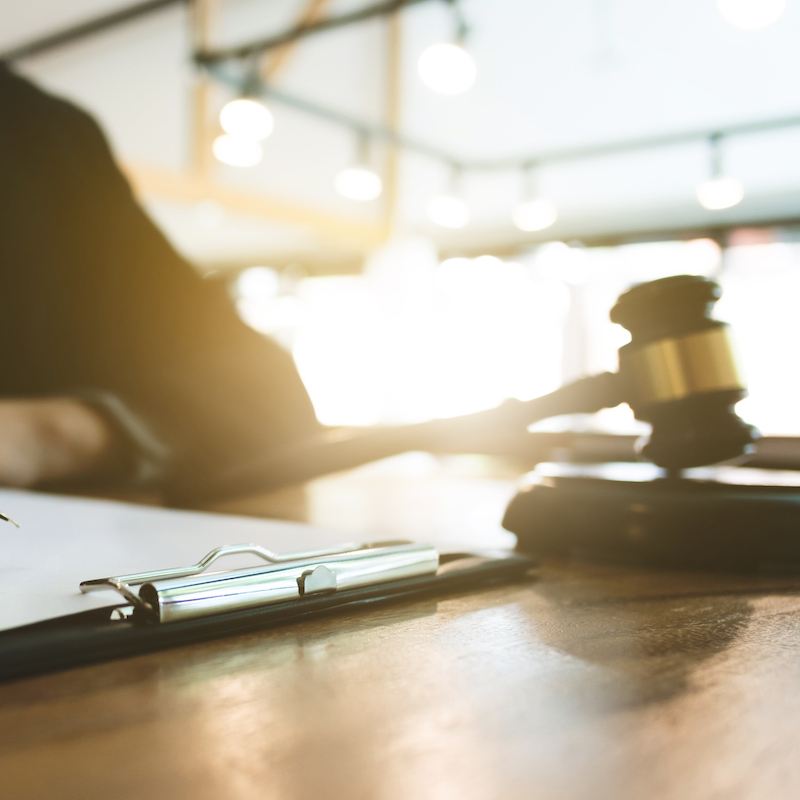Karla Dickens: Lost and Found
Employing anything from rusty lids and souvenir spoons to taxidermy birds and vintage fabrics, Karla Dickens unearths underlying narratives of both the tender and the traumatic.
Words: Briony Downes
Photography: Daniel Purvis
An astute collector of discarded everyday trinkets, Wiradjuri woman Karla Dickens has a keen eye for an object’s potential. Drawn to rusty lids, souvenir spoons, taxidermy birds and vintage fabrics, many of her works are laden with seemingly disparate items that when placed together, tell a powerful story laced with trauma, dark humour and unrelenting resilience.
With an art practice spanning more than 30 years, Dickens is deeply influenced by her Indigenous heritage, sexuality, motherhood and aspects of her personal history. A generously creative person, Dickens has worked across multiple disciplines including collage, photography, sculpture and film. Building on the highlights of previous years – including winning the Parliament of NSW Aboriginal Art Prize in 2013 and having her work projected in Songlines, VIVID’s 2016 Lighting of the Sails at the Sydney Opera House – Dickens has an extraordinarily busy year ahead. Continuing to maintain the prolific output initially spurred on by the birth of her daughter Ginger several years ago, this year Dickens is showing work in solo and group exhibitions nearly every month.
When we speak, Dickens is about to travel to Adelaide to install her work for Monster Theatres, the 2020 Adelaide Biennial of Australian Art. Curated by Leigh Robb, the exhibition seeks to make visible the monsters of contemporary life. For her take on the theme, Dickens has created A Dickensian Country Show, a large-scale installation using imagery and objects associated with circus performers and travelling carnivals.
Originally inspired by the life of Con Colleano, an Aboriginal Irish performer from Lismore known in the early 1900s for his spectacular tight-rope walking, Dickens sourced her materials from online auctions selling off amusement park rides, sideshow alley games and costumes. She spent more than 12 months layering these objects into tightly packed assemblages that embody the realities of contemporary Aboriginal experience. “It’s a huge body of work I really enjoyed making,” says the artist. “It’s a cross between my sculptural work and regular collage. There’s references to shooting galleries, Pauline Hanson, politics, ghost trains – it’s like a dark sideshow.”
Soon after setting up for Monster Theatres, Dickens was in Sydney to install another suite of works for the 22nd Biennale of Sydney, NIRIN, where she was invited by artistic director Brook Andrew to create work for the entrance of the Art Gallery of New South Wales. In response, Dickens constructed A Dickensian Circus, a collection of work she describes as “a symbolic narrative about the state of our environment and where Indigenous people are positioned in Australia”. Placed in nooks around the gallery’s grand marble and sandstone vestibule are a series of vintage bird cages on plinths. Inside the wire structures are aluminium statues of women and small assortments of objects – clown masks, feathered figures and doll faces. “I’ve made the plinths myself so when they are displayed with the cages, the work harks back to the human zoos our First Nations people were first shown in. It is also a reference to current incarceration rates,” she says. “My work does that a lot – it goes into history but it’s also relevant for today.”
Weathering a number of difficult years in the past, Dickens often writes emotionally charged poetry to accompany the work she makes. At times, the written word makes its way into the work. In Fight Club (2017), Dickens painted poetry across the surface of black garbage can lids, creating a series of eight warrior shields for the 2017 iteration of The National: New Australian Art at Carriageworks in Sydney. During a recorded walkthrough of the exhibition, curator Nina Miall described Dickens’ poetry in Fight Club as “ranging in style from melancholic to acerbic, exploring various anxieties of identity from the artist’s personal battle with depression to the persistence of Aboriginal stereotypes and national myths”. For Dickens, the written component of her practice replaces the traditional artist statement to offer the viewer deeper understanding of her work and allows her to “consolidate and tie it all together”, she says.
Looking ahead, Dickens prepares for an exhibition in July and August with artist Julie Gough at Wyndham Art Gallery in Victoria and a solo show at Lismore Regional Gallery later in the year. Continuing the search for objects and materials at charity shops, tips and garage sales, Dickens says, “When I make work, especially when there are many layers, I find using everyday items helps people engage. Lots of items people know exactly what they are but for me, it’s about changing the narrative of those items to tell a different story. As long as I keep working, that’s what I strive for. It’s good for me.”









